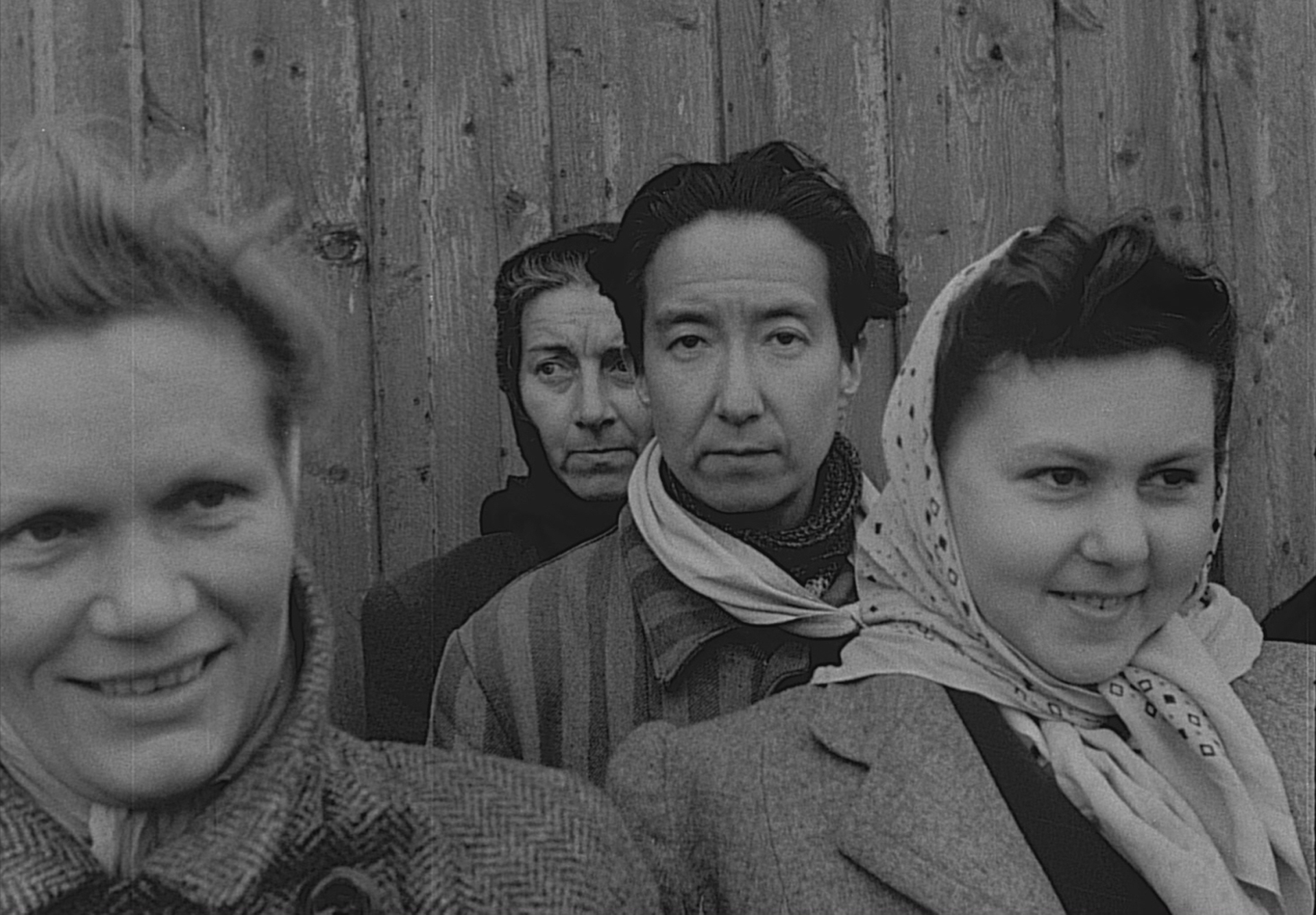In his book Speaking Truths with Film: Evidence, Ethics, Politics in Documentary, film critic Bill Nichols explores the topic of evidence. “All discourses, including documentary film, seek to externalize evidence,” he writes. It is the job of the historian—or, in this case, documentarian—to “pose questions based on his or her inferences about what really happened rather than adopt the views of others.” This is an exercise employed by Swedish director Magnus Gertten in his latest documentary, Nelly & Nadine, which had its North American premiere at the Hot Docs Film Festival in Toronto.
Sylvie is the woman at the centre of Nelly & Nadine: following the recent death of her mother, Sylvie acquired her family’s heirlooms and we join her as she sifts through her grandmother Nelly’s belongings for the first time, reading through diary entries and postcard missives, and watching through footage Nelly had taken following her liberation from a concentration camp. It’s an emotional experience, and Sylvie frequently chokes up when speaking of Nelly. She speaks with love and reverence, while also acknowledging that her grandmother had kept some secrets from her loved ones. Sylvie sets out to uncover them. She had been raised with little meaningful knowledge of her grandmother’s life: Nelly’s partner was introduced as a roommate, and her life during the Holocaust was never spoken about in detail. And so, we accompany Sylvie as she discovers her grandmother’s truth for the first time.
Nelly’s story is one of turmoil, perseverance and love. She was an opera singer when she was arrested by the Nazis for being part of the French Resistance—a fact Sylvie had not known, but learned from the inherited documents—and was sent to two concentration camps, Ravensbrück and Mauthausen, both of which she miraculously survived. It is at the former—Ravensbrück, an all-woman camp—where Nelly met Nadine. Nadine was the daughter of a Chinese ambassador to Spain and had been sent to the camp presumably for her political stances. The two women struck up a loving relationship, one that, according to her diary entries, gave Nelly the strength to survive the horrors of the camps,. They were separated when Nelly was sent to Mauthausen, a concentration camp where the hard labour claimed the lives of almost half of its 190,000 detainees.
In her diaries and letters, Nelly outlines the horrible conditions she and her fellow prisoners experienced in the camps, and emphasized that it was the memory of Nadine’s warmth and love that kept her alive. They reunited two years after each was liberated in 1945, and moved to Venezuela, where they continued living together until Nadine’s death in 1972.
Sylvie recalls visiting the two in Caracas when she was young, confessing that she had always assumed that the two women were just friends, and was never corrected. “Nothing is real socially until it is expressed,” Sylvie is told at one point when she meets with Suzanne Rodriguez, the biographer of Natalie Clifford Barley, who was a writer and owner of a literary salon in Caracas that Nelly frequented. Up until Sylvie took to uncovering her grandmother’s truth, Nelly’s identity was suppressed by her own daughter, Sylvie’s mother, whom Sylvie remembers as disliking Nadine, and by publication houses who refused to publish Nelly’s diary (ostensibly, because of its queer content).
Yet, Nelly never explicitly states her sexuality in any of her written or filmed content. It is here that Gertten employs the technique of inference that Nichols states is so necessary to the documentary film— externalize the evidence.
The film opens with black-and-white footage of the liberation of Ravensbrück; an archival film reel shot on the Swedish harbour of Malmö in 1945. Gertten was able to work with families of survivors to identify some of the waving women, who ranged from imprisoned Jewish women to Jehovah’s Witnesses. Near the end of the documentary, Gertten returns to this footage once more to find a solemn Nadine. She looks the camera dead-on, weary and tired, and isn’t celebrating in the manner that her peers are. Gertten overlays his reading on this captured moment—an extrapolation that, after hearing of Nelly’s feelings for her—could only make sense. She is worried about Nelly, Gertten asserts, unsure of whether the other woman survived her transfer to another camp. There is no way to know, of course, whether this is what clouded Nadine’s mind in this moment, but it is a powerful moment of inference that is especially necessary for the analysis of queer histories that societal pressures would otherwise suppress.
“Leaving certitude behind,” writes Nichols, “moves us into an arena of radical doubt that cannot be dispelled so much as embraced as part of a movement whose direction and intensity remain open to all the vicissitudes of history.” When queer stories have for so long been omitted and erased, Gertten’s approach to analyzing his evidence— the Malmö footage—through Sylvie’s heirlooms is an important practice.
Yet, Gertten does not simply use Nelly’s relics to confirm her homosexuality; he also aims to paint a portrait of a troubled life that was ultimately buttressed by love. Gertten displays the inherited documents in poignant ways: the narration of the diary is overlaid on haunting black-and-white footage of nature; a field where the tall grass billows violently; a brook with streaming water; the tops of swaying trees, shot from beneath; rain ruffling the leaves of big sunflowers; a wagon wheel on fire amid a field of wheat. And the footage Nelly had taped of her and Nadine’s life in Caracas is lovingly narrated by Sylvie, who herself is likely seeing it for the first time. “I see everything she went through in her life,” she says pensively, while watching a tape of her grandmother in a light blue dress and a pearl necklace. The colourful footage of dinner parties, cloud-shrouded mountains and pets, is in stark contrast to the monochrome visuals that accompany the reading of the diary.
The visual language is subtle but effective: though tasked with presenting three diverging timelines— those of Sylvie in the present, Nelly in the concentration camps, Nelly and Nadine in Venezuela— Gertten is able to distinguish each thread and jump from one to the other, constructing a dynamic mosaic of Nelly’s life.
And though it is the least visually remarkable, Sylvie’s thread is the glue that keeps this documentary human. Sylvie is our main tether; the figure through whose eyes we see the world of Nelly and Nadine— and we couldn’t have had a more kind or compassionate guide. Sylvie never fights the contents of her grandmother’s writing, most of which communicates a deep love for another woman. She is sympathetic to her grandmother and her lover for the difficulties they endured throughout their lives, both as prisoners of a concentration camp and queer women, and she is sympathetic to her own mother, who felt abandoned by Nelly after she left for Venezuela. It is primarily through Sylvie that Nelly & Nadine achieves its tenderness.
Nelly & Nadine is not a documentary about espionage or thrilling feats during the Second World War—in fact, Nelly being a part of the French Resistance is skimmed over briefly. Sylvie’s investigation of her grandmother’s life isn’t concerned with finding a war hero, but rather, with discovering the most authentic version of her grandmother and her grandmother’s partner. The film is testimony to how liberating the expression of truth is—particularly after it was hidden away for decades.


 Why you can trust Xtra
Why you can trust Xtra


